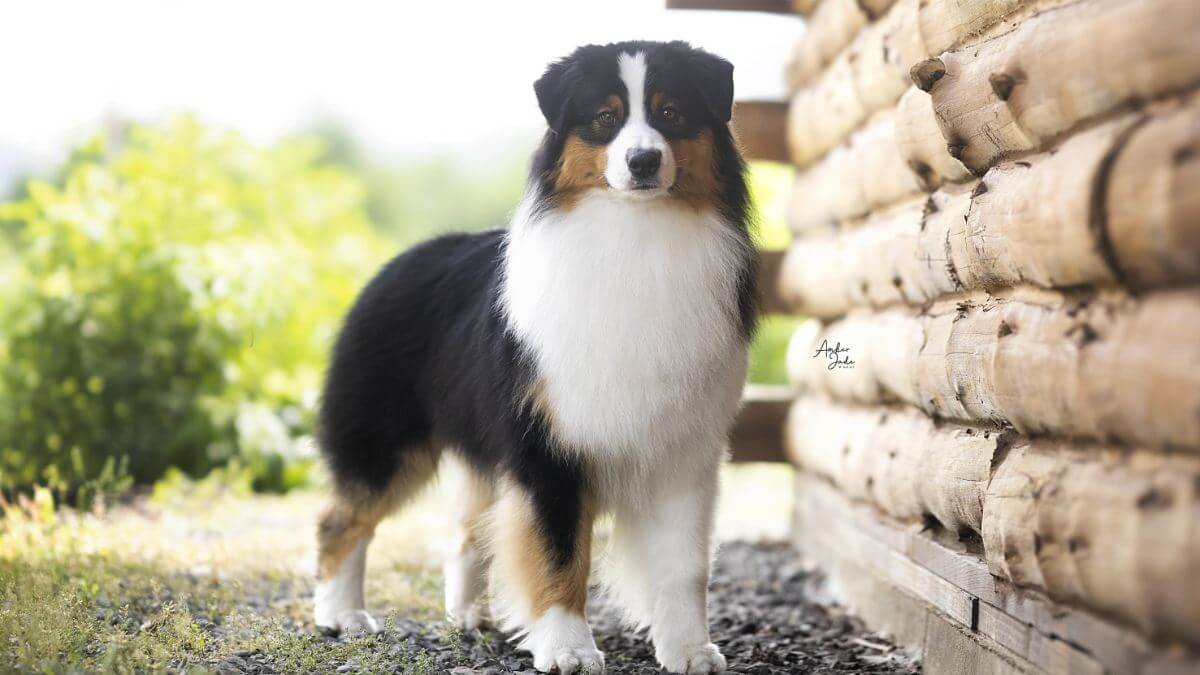


Home » Judging the Australian Shepherd & The Miniature American Shepherd

This article was originally published in Showsight Magazine, December 2015 issue.
The Miniature American Shepherd (MAS) enjoys its first year of full AKC recognition, it appears that the anticipated breed “split” has—and will continue to have—some interesting and definitely unintended consequences and pressures on the Australian Shepherd. The first hint of this is occurring in the AKC group ring today.
I received a call from a disgruntled owner whose handler had been asked to put their Australian Shepherd on the table in the group ring. The handler, upset that the judge did not know the difference between the Aussie and the MAS, was firm in her reply, clearly stating that this was an Australian Shepherd and the breed was not to be judged on the table. The judge quickly realized his or her mistake and was potentially embarrassed and/or confused at the situation.
Herding group judges having difficulty discerning whether it is an Aussie or a MAS being presented to them in the group ring is an issue that is going to persist. It should be dealt with professionally, accurately, and now.
It is not specifically the all-breed judge’s problem if they are confused as to the identity of these two breeds in the group ring. Ideally, both breeds should look almost identical with very few differences outlined in the Breed Standards. The first time I saw both breeds in the group ring together, I did a double-take, and it took me a moment and some quick internal processing to determine which breed was which. It caught me by surprise. They were both blue merles and both were the same size. They are not always that easy to tell apart, even for a breed specialist.
If one reads and compares both breed standards, there are some subtle differences, but none of those differences would help one differentiate between the two breeds. So, this new and potentially confusing situation in the group ring is not unexpected. The problem arises because the Australian Shepherd has no size disqualification only stated preferred sizes are further explained as not set in stone by the “quality is not to be sacrificed in favor of size” statement. This basically implies that any size Australian Shepherd that is of quality is allowed—any size.
At first glance, one might assume that this is clearly the way to identify and distinguish between the two breeds in the group ring. The Australian Shepherd is obviously the larger of the two, right? Not necessarily.
It is entirely possible to have an Australian Shepherd in the group ring that is smaller than the MAS in the same group. So how are Herding group judges going to determine which animal is the MAS (with a size disqualification and judged on the table) and which is the Australian Shepherd (with no size disqualification and not judged on the table)? Relying solely on size is not going to solve the issue.
There is no one answer to this incredibly interesting question. However, if we do nothing as a breed to help these judges, the most obvious solution might be to impose breed size ranges and disqualifications on the Australian Shepherd. The long-term and disastrous consequences of this potential solution should be avoided at all costs. However, the pressure to do so will mount in years to come—an unintended and predicted consequence of the breed split.
In light of the fact that an AKC judge cannot ask an exhibitor what breed they are showing in the group ring, what can we do to help ensure that this does not become an out-of-control issue between the two breeds in the group ring?
A judge can check the judge’s book prior to the group entering the ring. Each exhibit is listed by breed and armband number. This will work up to a point.
However, when both the MAS and the Aussie have the same armband number, this solution will not work.
The group ring steward can assist somewhat in helping if both exhibits are presented. If the ring steward is proactive with the table, this might help determine which dog/breed should be judged on the table.
As handlers, there are also potential, yet subtle and creative solutions. If you think there will be an issue for the judge determining which breed is which, agree to have the Aussie go in first in all instances. While it is an informal solution, if adopted and practiced, it has the potential to assist in the issue.
As exhibitors, we can also assist by being knowledgeable about this issue and helping a judge whenever possible and appropriate. If you are ringside and notice that there might be an issue for the group judge, take positive steps to assist. Quietly informing the handlers and/or the ring steward ahead of time might help.
If we choose other less solution-oriented and proactive options, additional unintended consequences and potentially detrimental results will be felt by the Australian Shepherd and MAS breeds in the future.